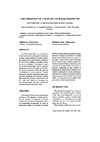Please use this identifier to cite or link to this item:
https://accedacris.ulpgc.es/jspui/handle/10553/56803
| DC Field | Value | Language |
|---|---|---|
| dc.contributor.author | Capote Álvarez, Juan Francisco | en_US |
| dc.contributor.author | López Fernández, Juan Luis | en_US |
| dc.contributor.author | Darmanin Garrido, N. | en_US |
| dc.contributor.author | Argüello Henríquez, Anastasio | en_US |
| dc.date.accessioned | 2019-10-07T11:57:12Z | - |
| dc.date.available | 2019-10-07T11:57:12Z | - |
| dc.date.issued | 1992 | en_US |
| dc.identifier.issn | 0004-0592 | en_US |
| dc.identifier.other | Dialnet | |
| dc.identifier.uri | https://accedacris.ulpgc.es/handle/10553/56803 | - |
| dc.description.abstract | El cerdo Negro Canario es una raza autóctona presente en el Archipiélago en tiempos anterio-res a su conquista e incorporación al reino de Castilla, como se pone de manifiesto en recien-tes excavaciones arqueológicas. Su origen es desconocido debido a la carencia de lenguaje escrito de los aborígenes y a la escasez de investi-gaciones al respecto. Actualmente se explota familiarmente obteniendo una carne magra, muy apreciada en lugares concretos del Archipielago, lo que ha evitado en gran medida su posible extin-ción. En el presente trabajo se realiza una zoome-tría sobre 11 animales adultos (4 machos y 7 hembras), realizandose en cada individuo 16 medidas que se utilizaron para un estudio de co-rrelación y elaboración de índices etnológicos y funcionales. Se consideran animales brevilíneos (índice corporal de machos 73,46 y de hembras 75,62%) y ultracóncavos (índice cefálico 42,97 para machos y 39,24% para hembras). | en_US |
| dc.language | spa | en_US |
| dc.relation.ispartof | Archivos de zootecnia | en_US |
| dc.source | Archivos de zootecnia[ISSN 0004-0592],v. 41 (154), p. 24 | en_US |
| dc.subject | 3104 Producción Animal | en_US |
| dc.subject.other | Cerdo negro canario | en_US |
| dc.subject.other | Islas Canarias | en_US |
| dc.title | Contribution to the study of Canary Black Pig | en_US |
| dc.type | info:eu-repo/semantics/article | en_US |
| dc.type | Article | en_US |
| dc.identifier.url | http://dialnet.unirioja.es/servlet/articulo?codigo=278848 | - |
| dc.description.lastpage | 24 | - |
| dc.identifier.issue | 154 | - |
| dc.description.firstpage | 24 | - |
| dc.relation.volume | 41 | - |
| dc.investigacion | Ciencias | en_US |
| dc.type2 | Artículo | en_US |
| dc.contributor.authordialnetid | No ID | - |
| dc.contributor.authordialnetid | No ID | - |
| dc.contributor.authordialnetid | No ID | - |
| dc.contributor.authordialnetid | 804456 | - |
| dc.identifier.dialnet | 278848ARTREV | - |
| dc.identifier.ulpgc | Sí | es |
| dc.description.sellofecyt | Sello FECYT | |
| item.fulltext | Con texto completo | - |
| item.grantfulltext | open | - |
| crisitem.author.dept | GIR IUSA-ONEHEALTH 4. Producción y Biotecnología Animal | - |
| crisitem.author.dept | IU de Sanidad Animal y Seguridad Alimentaria | - |
| crisitem.author.dept | Departamento de Patología Animal, Producción Animal, Bromatología y Tecnología de Los Alimentos | - |
| crisitem.author.orcid | 0000-0002-4426-0678 | - |
| crisitem.author.parentorg | IU de Sanidad Animal y Seguridad Alimentaria | - |
| crisitem.author.fullName | Capote Álvarez, Juan Francisco | - |
| crisitem.author.fullName | Argüello Henríquez, Anastasio | - |
| Appears in Collections: | Artículos | |
Items in accedaCRIS are protected by copyright, with all rights reserved, unless otherwise indicated.
